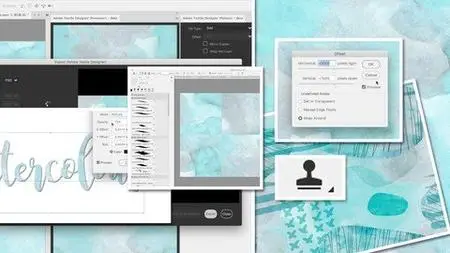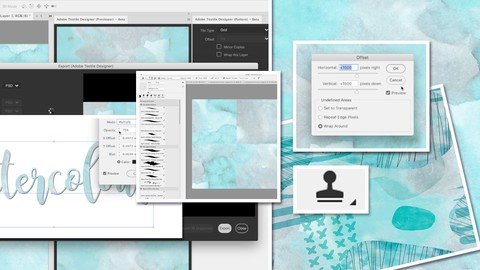Seamless Photoshop Repeating Background Pattern
MP4 | h264, 1280x720 | Lang: English | Audio: aac, 48000 Hz | 35m | 596 MB
MP4 | h264, 1280x720 | Lang: English | Audio: aac, 48000 Hz | 35m | 596 MB
Create a Pattern with No Visible Seam
What you'll learn
How to create a seamless background texture tile
Students will learn to create a background tile with no noticeable seams
Requirements
Basic Photoshop skills are an asset
Knowing the basic functions in Photoshop reduces confusion
Description
Hey there! Thanks for your interest in Repeat Textural Backgrounds for Pattern Design Swatches. A seamless pattern is an image that can be placed side-by-side with copies of itself. Ideally, there are no visible seams, so you can repeat this image and create a pattern that can go on infinitely to create unique backgrounds, text effects or brand elements. Often, we need a textured background, or a texture to overlay other objects. Most of the time we need a seamless tile so that it can repeat indefinitely. Tiled textures work well with repeating patterns. With a tiled texture, you can create a small image file, then make it repeat several times across the object. It is not necessarily just for use in pattern design. I personally make use of these in my illustrative work as well.
I have geared this class specifically in response to a student who wanted to produce a soft texture behind line art flowers she produced in one of my other classes, Textural Floral Pattern Design with the Photoshop Extension Textile Designer.
Creating a seamless repeating pattern is quite easy using the methods in this class, Repeat Textural Backgrounds for Pattern Design Swatches. The easiest way to show you the concept is with quick demonstrations, so I have tried to keep all the lessons short and to the point. I am using Photoshop, but the concept is what is important. This works fine in Gimp and other software that has an offset filter and a rubber stamp or cloning tool with the same functionality.
It is best to start with an image with a relatively even and continuous tone, but I demonstrate with a watercolour and later with some line art. If your image has an obvious element on one side and is light on the other, it will show and it will be more difficult to work with, but I show you how to make it work. I then demonstrate using that tile in the background of the repeat pattern I made in my class Troubleshooting Adobe Textile Designer Issues.
This is a great course for you to take no matter what your purpose for the end pattern swatch you create. Start straight away, so you can be benefitting from your knowledge immediately in your art practice!
Who this course is for:
Surface Pattern Designers, web developers, textile designers, artists, graphic designers



